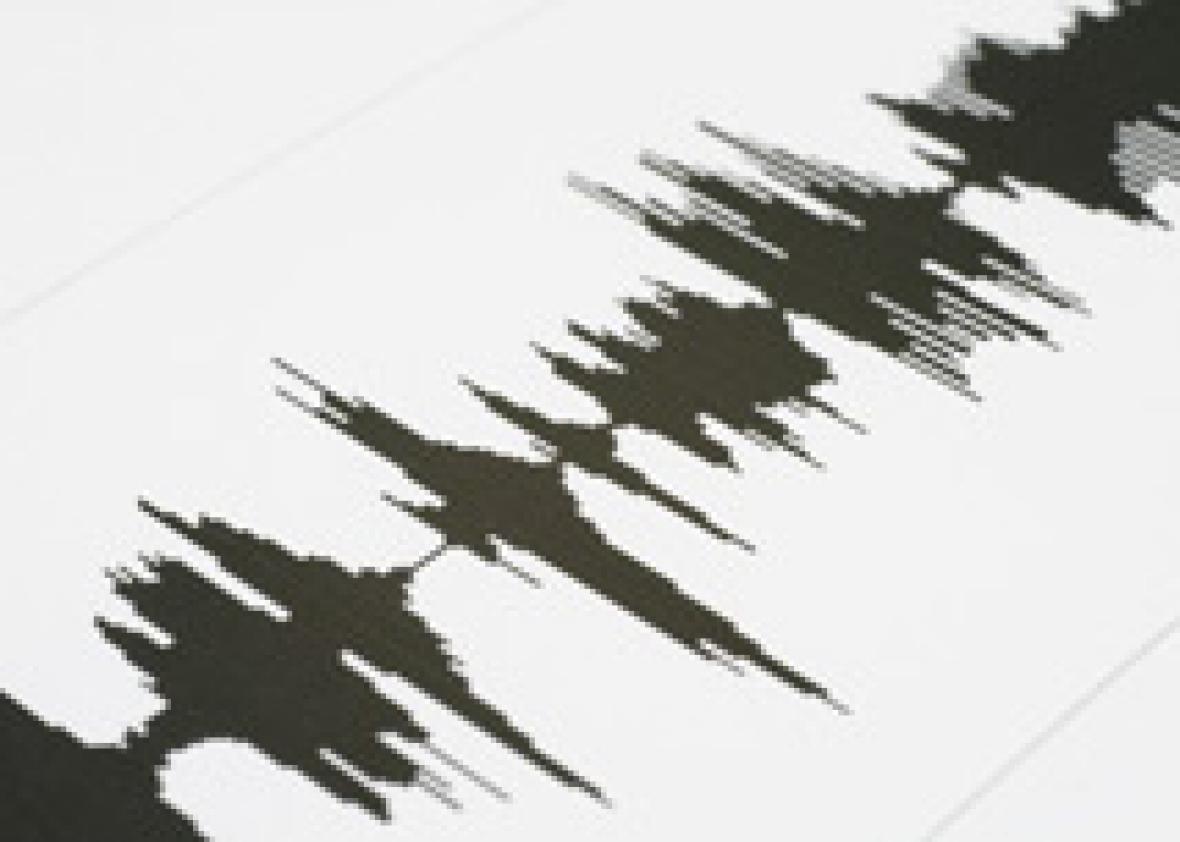Should You Be Afraid of an Aftershock?
Plus, what's the best thing to do in an earthquake? And other questions about the East Coast temblor.
An earthquake with a preliminary magnitude of 5.9 shook the East Coast Tuesday afternoon, sending tremors from Washington, D.C., all the way up to New York City and New Hampshire. Though there were no immediate reports of injuries, earthquakes always result in a flurry of questions to the Explainer's email inbox. Here are a few questions and answers from the archives: Government officials are warning East Coast residents to be prepared for potential aftershocks. Is it possible for an aftershock to be as large as the main event?
By definition, no. If an earthquake is followed by a more powerful seismic event, it's automatically redefined as a foreshock. The largest tremor is always classified as the earthquake; everything else is either a foreshock or an aftershock.
There are two principles that describe the typical behavior of aftershocks. The first, called Omori's Law, predicts that most shocks will occur immediately following the earthquake and become less and less frequent over time. The other, known as Båth's Law, states that the largest aftershock is, on average, about 1.2 magnitudes smaller than the main quake. (The Richter scale is logarithmic, meaning that an earthquake measuring magnitude 6.0 is 10 times larger than one measuring 5.0.) While a stronger earthquake produces more aftershocks than a weaker one, big aftershocks are rarer than small ones. (For more, read "Can an aftershock be as large as the original quake?")
What's the best thing to do in an earthquake?
Drop, get under cover, and hold on. Many children learn this in school, but these lessons tend to evaporate during a disaster. Also, be warned that the Web is littered with misleading advice by Doug Copp, a "rescue expert" who argues that it's dangerous to duck and cover. (He suggests lying down next to a large object, like a bed.) As the urban-legend-busting site Snopes point out, Copp's theory has been disputed by a number of experts, including the Red Cross. When an earthquake strikes, don't run or try to escape. Search for cover as close to you as possible; if you're in bed, stay curled up and protect your head with a pillow. If you're driving, pull over when it's safe, and stay away from bridges and overpasses. (For more, read "How To Survive An Earthquake.")
Can humans affect the frequency of earthquakes, just like we've affected the global climate?
Not significantly. While certain activities, like mining, oil extraction, and dam-building can trigger an earthquake by changing the weight on tectonic plates or lubricating the joints between them, there is no evidence that humans have caused a quake of greater than 5.3 in magnitude. Major earthquakes are natural and unstoppable events. If Earth's plates are going to shift and cause a disaster, there is nothing we can do. (Read more from "Are There More Earthquakes Than There Used To Be?")
Can an earthquake affect the way the planet spins on its axis?
Yep. As you'll recall from science class, the rotating Earth resembles a spinning top: The planet's axis does not always point in exactly the same direction but wobbles very slightly, describing small but measurable circles at the poles. A very large earthquake—one of a magnitude of 9.0 or greater—can shift enough mass relative to that of the entire Earth to alter, very minutely, the course of that wobble. But the planet's speed of rotation (which, of course, determines the lengths of our days) changes by only the tiniest amount, so we don't need to worry about adjusting our watches. * (Read more.)
Could Monday night's earthquake in Colorado have caused the East Coast quake?
Even a smallish earthquake can lead to aftershocks, as the sudden shift unsettles the existing balance along nearby joints. Surface-level energy waves ripple out from the epicenter and travel for hundreds of miles, but their energy dissipates exponentially as they radiate outward. Most aftershocks occur within one fault-length—the length of the joint along which the plates slipped—of the original quake. The 1992 Landers earthquake in the Mojave Desert triggered a smaller tremor 144 miles away, nearly five times the length of the original rupture, but that was considered a rare event. (Read more.)
Got a question about today's news? Ask the Explainer.
Correction, Aug. 23, 2011: The original said that an earthquake doesn't change the planet's speed of rotation. It does, but the effect is so small as to be insignificant. (Changes in atmospheric winds and ocean currents have a much greater effect.) (Return to corrected sentence.)
